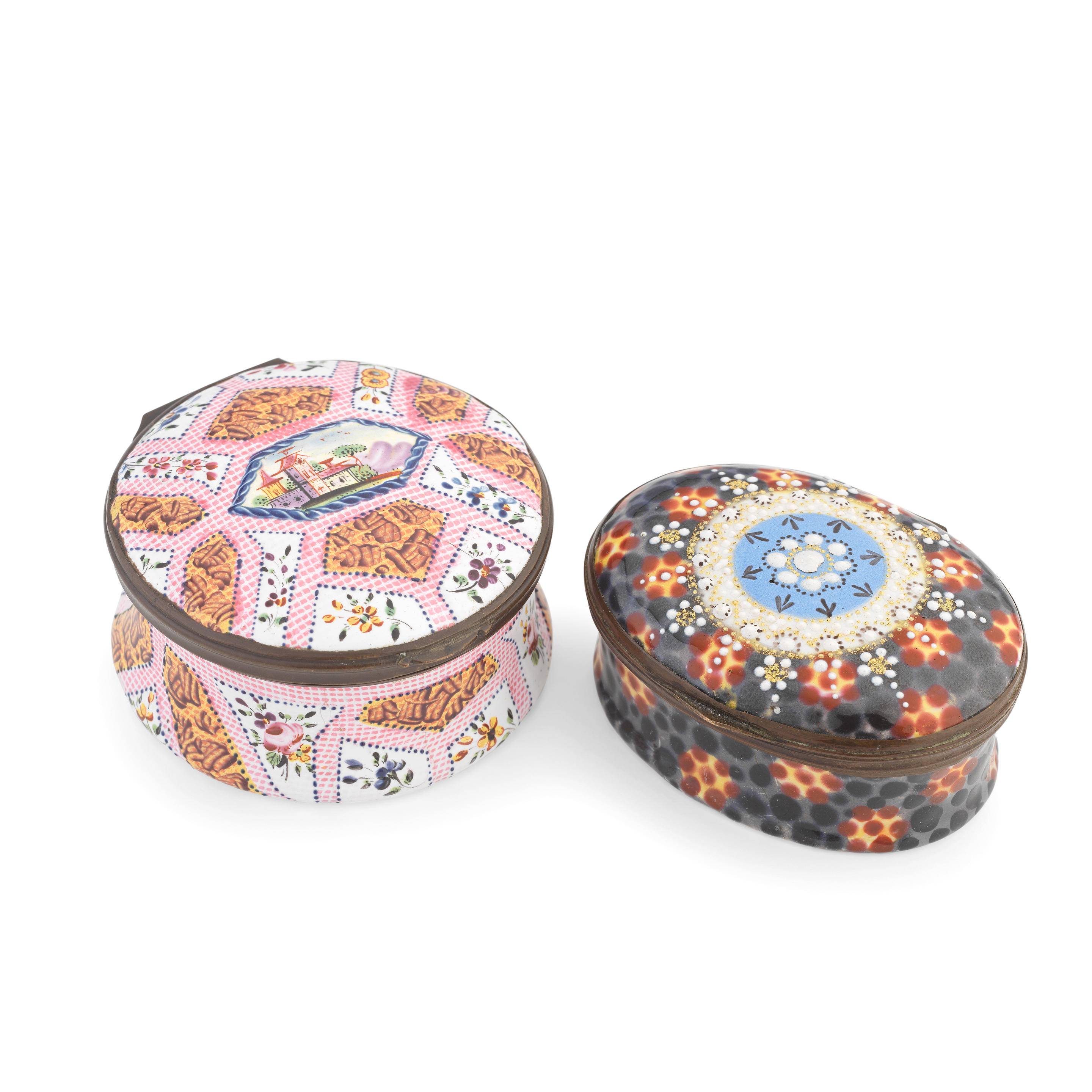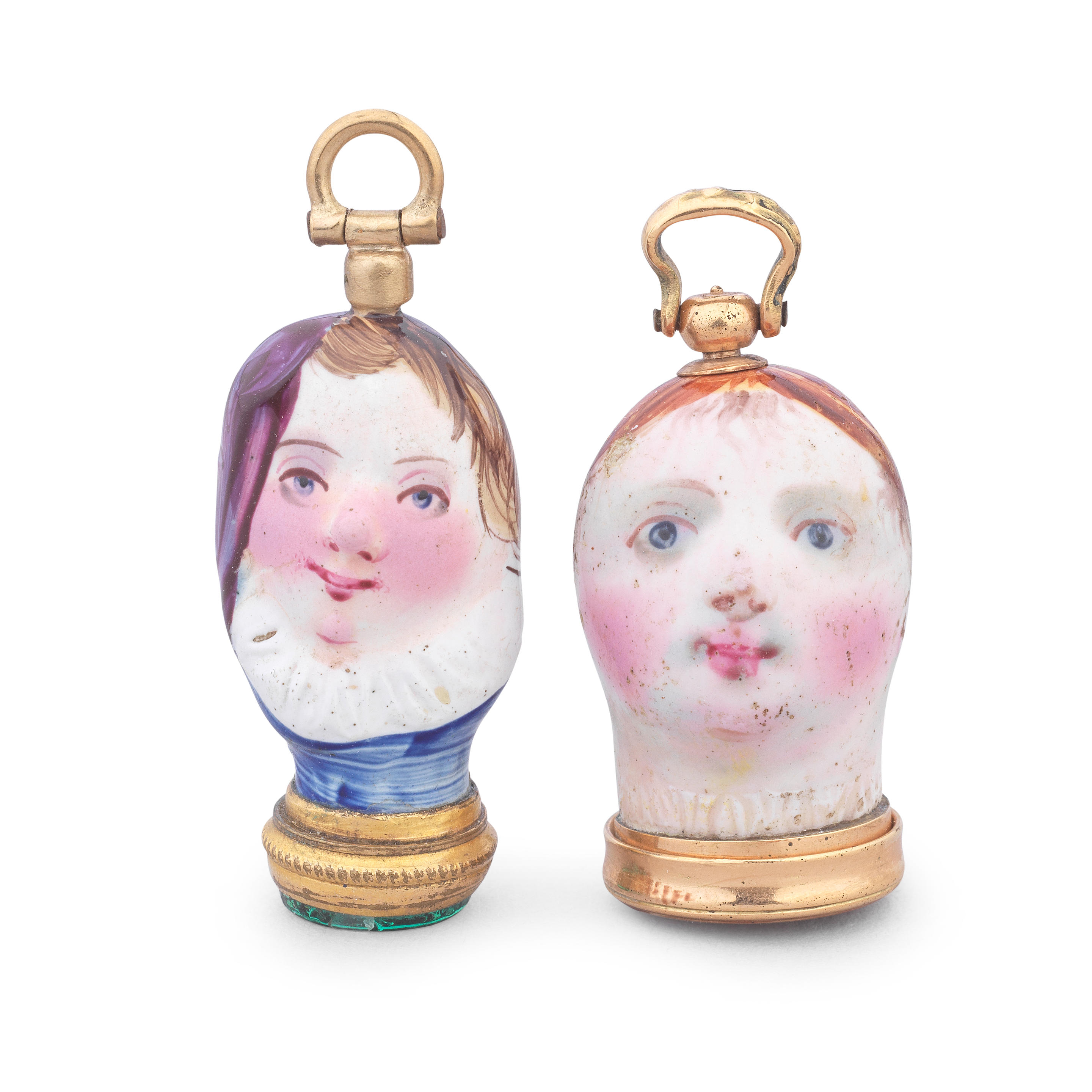The Fattening: An exceptional Dutch stipple-engraved wine glass by Gillis Hendricus Hoolaart circa 1775The round funnel bowl dramatically decorated with the silhouette of a horned bull from behind, beside a tree emerging from a densely scratch-engraved background, the leaves picked out in diamond-point, the reverse inscribed 'De vetwijerij' (The fattening) in diamond-point gothic script, the composite stem incorporating an upper multi-spiral airtwist section with a swelling knop, set into a beaded inverted baluster terminating in a basal knop, over a conical foot, 19.1cm highFootnotesProvenance L Blumka Collection, New York With Peter Korf de Gidts, Amsterdam Private Collection, The Hague With Frides Laméris, 23 June 2018 Stephen Pohlmann Collection Literature P Korf de Gidts, Advertisement, in Antiek XX, no.3 (1985), p.169 F G A M Smit, Uniquely Dutch Eighteenth-Century Stipple-Engravings on Glass (1993), p.161, no.Fa.16 Exhibited Delft: 37e oude kunst- en antiekbeurs, Museum Het Prinsenhof, 1985, catalogue p.58 Gillis Hendricus Hoolaart (1731-1816) was a clerk in the office of a civil law notary in Dordrecht. For a time he lived in Steegoversloot, the same street where both Frans Greenwood (1680-1763) and Aart Schouman (1710-1792) also lived, the latter only until Hoolaart was 16. It is highly likely that Hoolaart, much like Schouman, learnt how to engrave glass from Greenwood, who had pioneered the stipple technique. Stylistically his work shares features with both of his predecessors, including the mixing of both stipple and line engraving techniques, as well as the use of the full height of the bowl for the decoration. Smit (1993) records just seven glasses signed by Hoolaart, two of which depict a virtually identical bull as that on the present lot (nos.Fa.18 and Fa.19), both wine glasses with opaque twist stems. One of these was in the Guépin Collection, sold by Christie's Amsterdam on 5 July 1989, lot 94. The other, dated 1775, is illustrated by Pieter C Ritsema van Eck, Glass in the Rijksmuseum, Vol.2 (1995), p.425, no.536. A further four glasses by Hoolaart, including the present lot, are unsigned. Only one other of these, a small roemer in the Huis Van Gijn, is decorated with a bull (no.Fa.17). In the 17th and 18th centuries, the majority of beef consumed was imported. Large herds of bulls were reared in Denmark and in Schleswig-Holstein before being transported to Germany and Holland. They arrived lean after their long journeys in the early Spring and so were fattened, for which the fertile pastures of Holland owned by wealthy urban merchants proved particularly suitable and to which the inscription on this glass refers. The animals were brought back to the city markets in late Autumn where they were bought by butchers who sold the meat in central meat halls. Danish beef, known as herenvoedsel, was considered a nutritious delicacy, so this was a particularly lucrative line of business. The wealthy owners of these herds took particular pride in their cattle, its financial worth and the beauty of the meat.
The Fattening: An exceptional Dutch stipple-engraved wine glass by Gillis Hendricus Hoolaart circa 1775The round funnel bowl dramatically decorated with the silhouette of a horned bull from behind, beside a tree emerging from a densely scratch-engraved background, the leaves picked out in diamond-point, the reverse inscribed 'De vetwijerij' (The fattening) in diamond-point gothic script, the composite stem incorporating an upper multi-spiral airtwist section with a swelling knop, set into a beaded inverted baluster terminating in a basal knop, over a conical foot, 19.1cm highFootnotesProvenance L Blumka Collection, New York With Peter Korf de Gidts, Amsterdam Private Collection, The Hague With Frides Laméris, 23 June 2018 Stephen Pohlmann Collection Literature P Korf de Gidts, Advertisement, in Antiek XX, no.3 (1985), p.169 F G A M Smit, Uniquely Dutch Eighteenth-Century Stipple-Engravings on Glass (1993), p.161, no.Fa.16 Exhibited Delft: 37e oude kunst- en antiekbeurs, Museum Het Prinsenhof, 1985, catalogue p.58 Gillis Hendricus Hoolaart (1731-1816) was a clerk in the office of a civil law notary in Dordrecht. For a time he lived in Steegoversloot, the same street where both Frans Greenwood (1680-1763) and Aart Schouman (1710-1792) also lived, the latter only until Hoolaart was 16. It is highly likely that Hoolaart, much like Schouman, learnt how to engrave glass from Greenwood, who had pioneered the stipple technique. Stylistically his work shares features with both of his predecessors, including the mixing of both stipple and line engraving techniques, as well as the use of the full height of the bowl for the decoration. Smit (1993) records just seven glasses signed by Hoolaart, two of which depict a virtually identical bull as that on the present lot (nos.Fa.18 and Fa.19), both wine glasses with opaque twist stems. One of these was in the Guépin Collection, sold by Christie's Amsterdam on 5 July 1989, lot 94. The other, dated 1775, is illustrated by Pieter C Ritsema van Eck, Glass in the Rijksmuseum, Vol.2 (1995), p.425, no.536. A further four glasses by Hoolaart, including the present lot, are unsigned. Only one other of these, a small roemer in the Huis Van Gijn, is decorated with a bull (no.Fa.17). In the 17th and 18th centuries, the majority of beef consumed was imported. Large herds of bulls were reared in Denmark and in Schleswig-Holstein before being transported to Germany and Holland. They arrived lean after their long journeys in the early Spring and so were fattened, for which the fertile pastures of Holland owned by wealthy urban merchants proved particularly suitable and to which the inscription on this glass refers. The animals were brought back to the city markets in late Autumn where they were bought by butchers who sold the meat in central meat halls. Danish beef, known as herenvoedsel, was considered a nutritious delicacy, so this was a particularly lucrative line of business. The wealthy owners of these herds took particular pride in their cattle, its financial worth and the beauty of the meat.















Testen Sie LotSearch und seine Premium-Features 7 Tage - ohne Kosten!
Lassen Sie sich automatisch über neue Objekte in kommenden Auktionen benachrichtigen.
Suchauftrag anlegen